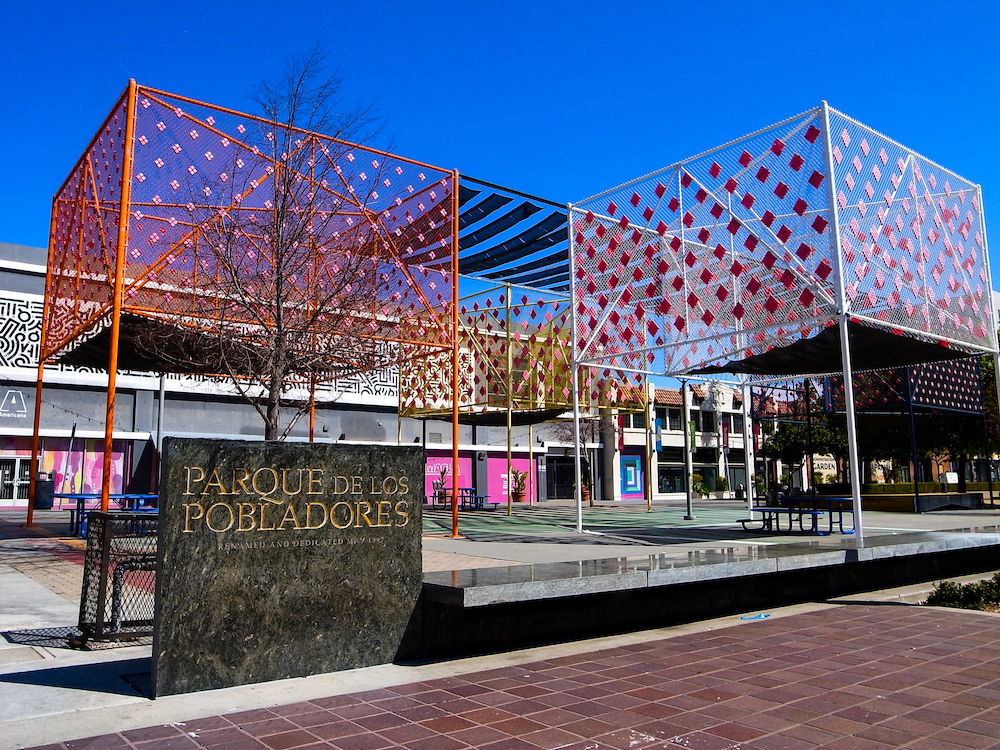Urban Rooms

Photographer: Hunter Ridenour (2022)
Artist: Estudio Teddy Cruz + Forman
Year: 2017
Commissioned by: The City of San José’s Office of Cultural Affairs Public Art Program and Movimiento de Arte y Cultura Latino Americana (MACLA)
Aesthetics of Public Art
By Lindsley Britton, Art174, Fall 2021, SJSU
“Urban Room’s” structure consists of elevated “rooms” formed out of brightly colored vinyl-coated chain-link fences decorated with colored diamonds. The chain link structures sit on steel edifices, creating additional “rooms” below, shaded by the chain link latticework and black fabric canopies stretched between the sections. The result is an inviting open space adjacent to a stage used to host events and community gatherings.
The shaded area and event stage transform the park into a platform for block parties, community gatherings, and organized events in San José’s arty SoFA District. Between events, there are picnic tables situated in the shaded areas, providing an informal neighborhood gathering space. Viewed from the street, the large, elevated “rooms” provide a colorful addition to the narrow strip of a park, reminiscent of colorful playground equipment.
Urban Rooms is a public art piece about land use and communal space adaptation in the cultural production site of downtown San José. By choosing chain link fence as a building material, the design team invites dialogue about community and spatial division. Fences are designed to separate and divide, but by lifting the fences overhead to provide shade, their function is renegotiated.
(concludes essay by Lindsley)
Public Art as Resistance
Studio Teddy Cruz and Foreman have received international accolades for innovative flexible housing based on informal architecture. “Urban Rooms” encourages resistance of the individual in favor of a communal space. Transforming the elements that would segment people, land, and communities to features that bridge division to form community.
Decentering the concept of individual space results in an experience where the viewer becomes a participant in critique of land tenure and use. Mimicking Indigenous villages, the structures demonstrate the interdependence between the individual and community. How neither can be whole without the other.
Continue Your Walk
After walking through the space, stroll over to the corner where you’ll find the next public artwork, a bas relief sculpture.
Additional Resources
- “Public Art: Urban Rooms” description by City of San José
- “Urban Rooms. San Jose, CA -Teddy Cruz + Fonna Forman” video by Adrien (2017)